
A bogie is a chassis or framework that carries a wheelset, attached to a vehicle—a modular subassembly of wheels and axles. Bogies take various forms in various modes of transport. A bogie may remain normally attached or be quickly detachable ; it may contain a suspension within it, or be solid and in turn be suspended ; it may be mounted on a swivel, as traditionally on a railway carriage or locomotive, additionally jointed and sprung, or held in place by other means.
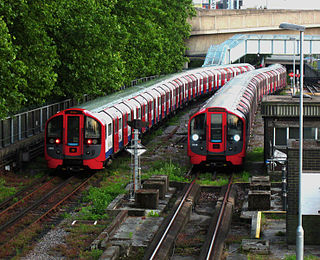
London Underground rolling stock includes the electric multiple-unit trains used on the London Underground. These come in two sizes, smaller deep-level tube trains and larger sub-surface trains of a similar size to those on British main lines. New trains are designed for the maximum number of standing passengers and for speed of access to the cars.

The Standard Stock title was applied to a variety of Tube stock built between 1923 and 1934, all of which shared the same basic characteristics, but with some detailed differences. This design is also sometimes referred to as 1923 Tube Stock, 1923 Stock, or Pre 1938 Stock. Most of the Standard Stock was built to replace the first generation of "Gate Stock" Tube trains or to provide additional trains for extensions built in the 1920s and early 1930s. Standard Stock cars consisted of motor cars, plus trailer cars and "control trailers". All were equipped with air operated sliding doors, although the guard's door on the earlier trains was a manually operated inward-opening hinged door.
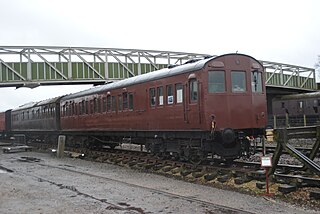
The T Stock was a series of electric trains originally built in various batches by Metropolitan-Vickers and the Birmingham Railway Carriage and Wagon Company for the Metropolitan Railway in 1927–31 for use on electric services from Baker Street and the City to Watford and Rickmansworth, though rarely some worked on the Uxbridge branch.
Diesel locomotives have seen limited use on the London Underground, largely because exhaust gases cannot be discharged when the vehicles are working in tunnels. A prototype diesel engine numbered DEL120 was built in 1939 from two 1915 stock motor cars, which was expected to be part of a batch of ten, but experience with battery locomotives showed that these were a better alternative. Three 0-6-0 diesels (DL81-DL83) were obtained in 1971, to replace the last steam engines, but were too short to operate the signalling system, and too heavy for some of the bridges. In 1996, fourteen diesels were supplied by Schöma of Germany, which were used during the construction of the Jubilee line tunnels. They were fitted with exhaust scrubbers, to enable them to work in the tunnels. To speed up track renewals on the subsurface lines, Class 66 locomotives have been hired in since 2006 to handle permanent way trains, but again suffer from being too heavy for some of the bridges. Because they are not fitted with tripcock safety devices, and pull trains much longer than the signalling system is designed for, they are restricted to slow speed running.
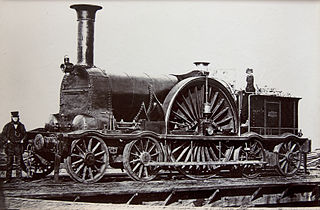
Under the Whyte notation for the classification of steam locomotives, 4-2-4 represents the wheel arrangement of four leading wheels on two axles, two powered driving wheels on one axle, and four trailing wheels on two axles. This type of locomotive is often called a Huntington type.

The London Underground 1960 Stock was a class of electric multiple unit for the London Underground Central line. Twelve motor cars were supplied by Cravens, and pairs were made up to four cars by the addition of two converted standard stock trailers. A production run of 338 motor cars was shelved, due to the time needed to assess the new features and the cost of converting the trailer cars. Some of the pre-1938 trailers were later replaced by 1938 stock trailers.

London Underground battery-electric locomotives are battery locomotives used for hauling engineers' trains on the London Underground network where they can operate when the electric traction current is switched off. The first two locomotives were built in 1905 for the construction of the Great Northern, Piccadilly and Brompton Railway, and their success prompted the District Railway to buy two more in 1909, which were the only ones built to the loading gauge of the subsurface lines. Following this, a number of battery vehicles were built by converting redundant motor cars, with the batteries placed in the unused passenger compartment. One exception to this was made by the City and South London Railway, who used a trailer car to hold the batteries, and wired them to a separate locomotive.

An electric multiple unit (EMU) is an electric train capable of operating in multiple with other EMUs that does not have a separate locomotive, typically passenger trains with accommodation in every vehicle and a driving position at each end. The term can also be used to describe a train such as the Advanced Passenger Train that was a permanent formation with a non-driving power car. As of December 2010 two-thirds of the passenger carriages in Britain are formed in EMUs.

The London Underground 1995 Stock is a type of rolling stock used on the Northern line of the London Underground. A total of 106 six-car trains were built, entering service between June 1998 and April 2001, replacing the 1959 Stock, 1962 Stock and 1972 Stock. They are very similar to the 1996 Stock used on the Jubilee line.
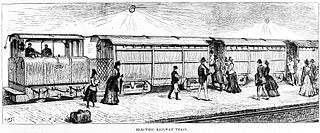
Electric locomotives were first used on the London Underground when the first deep-level tube line, the City and South London Railway (C&SLR), was opened in 1890. The first underground railways in London, the Metropolitan Railway (MR) and the District Railway (DR), used specially built steam locomotives to haul their trains through shallow tunnels which had many ventilation openings to allow steam and smoke to clear from the tunnels. It was impractical to use steam locomotives in the small unvented tubular tunnels of the deep-level lines, and the only options were rope haulage or electric locomotives.
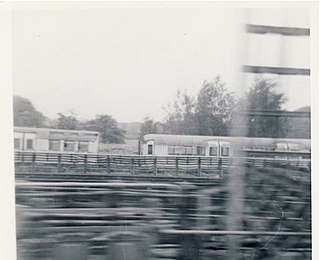
The London Underground 1935 Stock was an experimental train design by Metropolitan Cammell in London. Twelve two-car units, marshalled into four six-car trains, were built. They served as the prototypes for the later 1938 Stock.
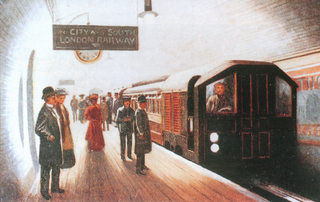
The Central London Railway Stock were electric multiple units composed of trailers that had been converted from carriages designed to be hauled by electric locomotives with new motor cars. The Central London Railway opened in 1900 with electric locomotives hauling wooden carriages, but the heavy locomotives caused vibrations that could be felt in the buildings above the route. It was found that conversion to electric multiple units solved the problem, so new motor cars were bought and replaced all the locomotives by June 1903. Trains normally ran with six-cars, four trailers and two motor-cars. Some trailers were equipped with control equipment to allow trains to be formed with three cars.

Metropolitan Railway electric multiple units were used on London's Metropolitan Railway after the lines were electrified in the early 20th century.

District Railway electric multiple units were used on London's Metropolitan District Railway after the lines were electrified in the early 20th century.

Departmental locomotives on the London Underground consist of vehicles of a number of types which are used for engineering purposes. These include battery locomotives, diesel locomotives, electric locomotives, sleet locomotives, pilot motor cars and ballast motor cars. Details of the first four types are covered elsewhere. Pilot motor cars and ballast motor cars are generally vehicles which have been withdrawn from passenger service, but continue to be used by the engineering department. Pilot motor cars are used to move other vehicles around the system, while ballast motor cars are used to haul ballast trains and engineering trains.

The London Underground opened in 1863 with gas-lit wooden carriages hauled by steam locomotives. The Metropolitan and District railways both used carriages exclusively until they electrified in the early 20th century. The District railway replaced all its carriages for electric multiple units, whereas the Metropolitan still used carriages on the outer suburban routes where an electric locomotive at the Baker Street end was exchanged for a steam locomotive en route.

Ruislip depot is a London Underground traction maintenance depot on the Central line, and is situated between the stations of Ruislip Gardens and West Ruislip in the London Borough of Hillingdon. The depot is accessible from both ends, and was built for the Central Line extensions under the 1935-1940 New Works Programme. It was nearly completed by 1939, when the outbreak of the Second World War prevented further work. It was used as a factory for anti-aircraft guns during the war, and was finally opened in 1948. The main car shed has 16 tracks, and there is also a three-track car cleaning shed.

The South African Railways Dutton road-rail tractors of 1923 were road-rail steam tractors.

Acton Works is a London Underground maintenance facility in West London, England. It is accessed from the District line and Piccadilly line tracks to the east of Acton Town station, and was opened in 1922. It was responsible for the overhaul of rolling stock, and gradually took on this role for more lines, until the formation of the London Passenger Transport Board in 1933, when all major overhauls of underground vehicles were carried out at the works. By 1985, when rolling stock had become more reliable and maintenance intervals had increased, this function was devolved to depots on each line. Subsequently, Acton continued to overhaul major items after they had been removed from trains at the depots, and tendered for work, which included the conversion of the A60 Stock to One Person Operation. It is likely to be reorganised and expanded to house the departments displaced from Lillie Bridge Depot which is being demolished as part of the redevelopment of Earls Court Exhibition Centre.






















